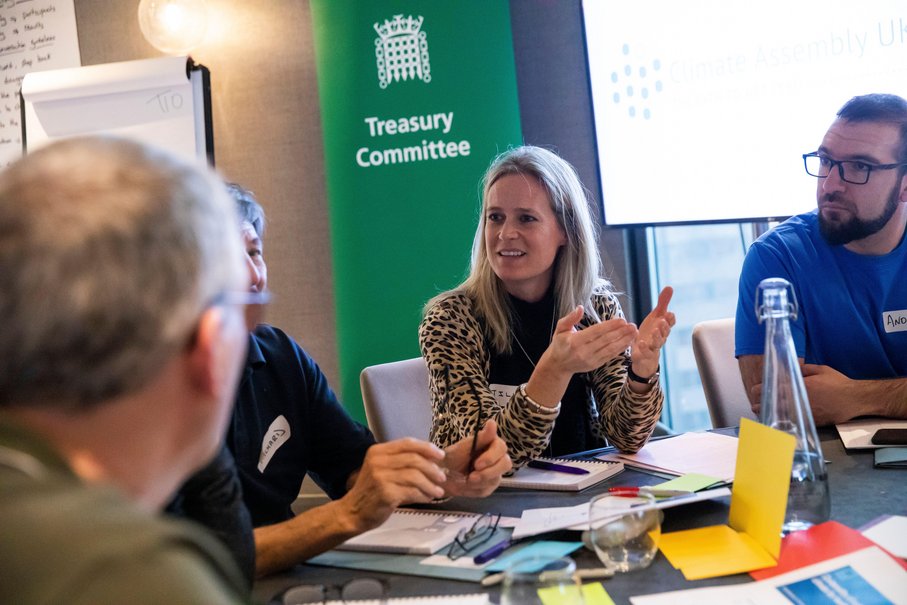Interested in learning more about citizen participation? Check out our course: Participate Practically.
During the pandemic, countless deliberative processes flourished as online-only formats – among them the Citizens’ Assembly on Democracy in the UK. We at Participation Factory have also run digital-only projects in the past. For example, one of our pilot youth engagement projects linked up school children from Zambia with kids in the Czech Republic and Russia – all of which was only possible thanks to online tools.
There’s no doubt that new digital tools are making participatory processes possible that would have been inconceivable just a decade or two ago.
Here are the top five reasons why you should think very carefully before going digital-only:
1) Online participation requires know-how and access to technology
Conducting a purely online process excludes two groups of people: Those who lack access to digital devices, and those who lack the know-how necessary to participate.
We faced this issue with our youth engagement project: the children in Zambia were tech-savvy, but many of them didn’t have access to their own devices. Luckily, we were able to make arrangements for them to borrow a phone or laptop from their parents. Yet this step significantly complicated the organisation of the project – and solutions like this aren’t always available.
Equally, there is a large number of people who lack the know-how to participate in an online consultation. Remember that even people who use the internet on a daily basis can quickly end up outside their comfort zone if they are expected to use an unfamiliar app or platform.
2) Offline uptake is higher
During lockdown, the internet functioned as a window onto the world – and many of us sat gazing through it for hours on end. It meant that our lives could keep going, from school and work to concerts and even drinks with friends. But as soon as things started opening up again, invitations to online events began to look a lot less attractive.
In our experience, young people in particular are often wary of invitations to participate in an online discussion. While they belong to a generation that is largely digital-native, this doesn’t mean they don’t value the chance for some time on the other side of the window – especially with memories of lockdown still so fresh.
3) People are more engaged in person than online
Our attention span is limited looking at screens. We can focus much longer in person, we can take breaks together etc. Online, we have a few minutes of focus, before people start drifting off.
This year’s Conference on the Future of Europe used a combination of online and offline sessions. Engagement online was noticeably harder to pull off. People weren’t there physically, so it was harder to figure out how to engage people: What are they thinking, who wants to talk? If you are going digital-only, make sure you consider how to facilitate an online discussion to get the most out of it.
4) The personal touch
Simply put: There’s a certain magic in sitting down in person for a coffee break. It’s easier to engage with someone in a deliberation process if you have had a chat with them between sessions. In an online space, we tend to be much more to the point. We’re here for a specific reason for a certain amount of time, and have a job to do. We run the risk of treating other people as work functions!
In person meetings can also have a positive knock-on effect for digital formats. If online meetings are preceded by at least one in-person meeting, the dynamic between participants during online sessions will be better.
5) Choice is key
None of this is to say that digital participation doesn’t have an important role to play. Offline-only processes come with major drawbacks of their own, and exclude a large number of people. The best option is to use a hybrid format, and allow people to choose for themselves.
There are countless people who can only participate thanks to digital tools – say, a single parent who can’t arrange childcare to go and attend a meeting in person. Or take the example of a refugee who has just arrived in the country. For someone who is only just getting to grips with the local language, it can be hard to speak up. Engaging online is a great solution. They can use online translators for things they don’t understand, or write comments at their own pace, whenever they like.
Sometimes, it’s just about convenience. It’s worth remembering that people are busy – the more flexibility you offer them, the more likely they are to see a process through.
Finally, remember that it doesn’t have to be a matter of either/or: During a strategic planning process for the Prague 1 participatory budget, some people came to every meeting, whether online and offline, because they wanted to be part of all the discussions.
A Sense of Community
Ultimately, offline encounters contribute to a sense of community. They can help us move away from the idea of individuals working for their own interest, and foster an environment where everyone works together as a team. For the time being, this is still easiest to achieve through meetings in the offline world.
This article was produced in cooperation with Participation Factory. Participation Factory is a social enterprise that mainstreams participation and data-driven approaches into governance and process design. Our experts support local governments in designing participation driven processes and systems, building capacities of their team, and implementing digital participation tools and Civic Tech. To learn more, refer to our website or contact us at info@participationfactory.com.
